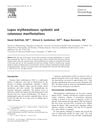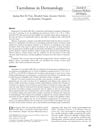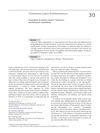Update on the Use of Topical Calcineurin Inhibitors in Cutaneous Lupus Erythematosus
February 2011
in “
Biologics: Targets & Therapy
”

TLDR Topical calcineurin inhibitors, especially 0.1% tacrolimus ointment, are effective and well-tolerated for treating cutaneous lupus erythematosus but require more research for standard treatment guidelines.
The document from 2011 reviews the use of topical calcineurin inhibitors (TCIs), tacrolimus and pimecrolimus, in treating cutaneous lupus erythematosus (CLE). It compiles data from various small studies and case reports involving a total of 144 patients, showing that TCIs can be effective in treating CLE, particularly with 0.1% tacrolimus ointment. The effectiveness varies across CLE subsets, with systemic lupus erythematosus lesions responding well, while discoid lupus erythematosus lesions are less responsive. TCIs are well-tolerated with minimal side effects and do not cause skin atrophy, making them a promising alternative to corticosteroids. However, the document emphasizes the need for more extensive, controlled studies to establish evidence-based protocols for their use in CLE, as current clinical effects are limited to the duration of treatment. Concerns about the potential risk of skin malignancies with long-term use of TCIs are noted, but the document suggests that the risk may be overrated for CLE patients who follow strict UV protection guidelines.







